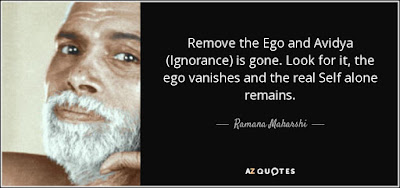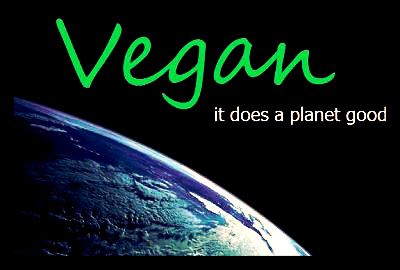More and more competitive athletes are beginning to try a vegan diet, but for many it’s hard for them stick with it. They start with sincere intentions to improve their health naturally along with benefiting their performance by changing to a plant-based, cruelty-free diet. Why then do so many revert back to consuming animal products? The answer is simple, there’s just not enough information out there.
This article is meant to help. Here are three common problems athletes report after switching to a vegan diet along with their solutions:
#1: Constant hunger:
Active people naturally need more protein than the average person does. Often when animal products are eliminated from the diet, so is a large portion of the dietary protein. Without adequate protein in the diet, carbohydrates consumed will enter the bloodstream faster, causing insulin levels to rise rapidly (spike), and then a short time later decline (crash). With protein and/or a snack added to each meal this “crash” is not likely to occur. Protein complements the carbohydrate, allowing it to enter the bloodstream at a steady rate, thereby delaying the onset of hunger and sustaining necessary energy levels.
Another thing that sometimes happens when animal products are eliminated, is a large portion of the dietary fat is also eliminated. Cutting all fat out of the diet is not the goal, although saturated fat should be discouraged for optimum performance. A very low fat diet is okay for a low to moderately active person. On the other hand, a highly active person, especially an endurance athlete who has adopted a plant-based diet, will need to assure they’re getting enough good quality fats in their meals.
Similar to protein, fat helps to slow the rate at which the carbohydrates enters the bloodstream, thus providing sustained, consistent energy. Dietary fat also helps the absorption of fat-soluble vitamins such as vitamin E. Vitamin E is a powerful antioxidant that will help quicken the recovery process. Cold pressed oils such as flax and hemp are extremely valuable to the vegan athlete. Both flax and hemp oils contain omega-3 fatty acids, and, most importantly, have anti-inflammatory properties. These oils vastly speed the recovery and repair of soft tissue damage, which commonly occurs with a regime of daily training.
Suggested solution:
Make sure protein and a good quality fat is consumed with each meal and/or snack. *Helpful tips…when making bread, muffins, or any baked goods, leave out some of the flour and replace it with soy protein powder, hemp flour, or bean flour. Use hemp seed oil as a base for salad dressing or to mix with a soy drink to make it creamier. Use hemp seed oil on cereal and in baking.
A short list of quality vegan protein sources:
-
Hemp seed nut and flour
-
Tofu
-
Beans (kidney, black, garbanzo, soy, adzuki)
-
Legumes
-
Soy protein powder
-
Unsweetened soy drink

Short list of quality vegan fat sources:
-
Extra virgin olive oil
-
Flax seed oil
-
Hemp seed oil
-
Avocado
-
Non-roasted nuts and seeds
#2: Muscle cramps and/or stiffness:
A low sodium level or a lack of dietary sodium, especially when combined with regular sweating may quickly deplete sodium stores, often resulting in muscle cramping and stiffness. Most plant sources have little sodium with the exception of some seaweed. Sedentary people, vegan or not, do not need to be concerned with a lack of dietary sodium; however, vegan athletes do. As with many nutrients, sodium requirements become elevated proportionately as activity levels increase.
Low calcium levels in vegan athletes usually occur due to a combination of a lack of dietary calcium and hard training. Calcium is used during muscle contractions, causing many endurance athletes, vegan or otherwise, to have reduced stores.
Suggested solution:
During heavy training a plant-based athlete would benefit by adding sea salt to at least one meal or snack per day. One week prior to a long race in a warm climate, the athlete would benefit by consuming sea salt with every meal.
Athletes who consume calcium-rich foods at each meal will greatly benefit by developing supple, limber muscles. *A helpful tip…add raw (non-roasted) sesame seeds to cereal, salads, and anything else you can think of. Sesame seeds are very high in calcium. To maximize the absorption of calcium from sesame seeds, grind them in a coffee grinder. Try grinding a mixture of sesame seeds and flax seeds and keeping them in the fridge for convenient, daily use.
Calcium-rich foods include:
-
Almonds
-
Beans (all)
-
Dark, leafy green vegetables (spinach, kale, Swiss chard, collard greens)
-
Sesame seeds
-
Sunflower seeds

#3: Low energy level:
When red meat is eliminated from a physically active person’s diet, the long-term effect is commonly a reduction in red blood cells often leading to anemia. Whether vegan, vegetarian or meat eater, athletes have traditionally had trouble maintaining satisfactory iron levels for optimal performance. Maintenance of iron stores becomes increasingly difficult during times of heavy training. Much like sodium and calcium, iron is lost in sweat, making warm weather training more of a drain on iron stores. Unlike sodium though, iron levels may take up to six months to become dangerously depleted. Often not realizing this, the athlete will wonder how performance has slowly and gradually declined without any change in diet or activity level. And, because iron levels take considerable time to become diminished, rebuilding takes equal time. Additionally, iron is also lost as a result of compression hemolysis (crushed blood cells due to intense muscle contractions).
Suggested solution:
A semi-annual blood test is recommended. When Iron levels are revealed there’s no need for them to ever become depleted. Iron rich foods are best consumed on a daily basis along with vitamin C to help with absorption. Also, if training occurs in a warm climate (excessive sweating) year round, or training consistently exceeds 15 hours per week, an iron supplement is recommended.
Iron-rich foods:
-
Fortified cereal
-
Split pea soup
-
Cookies or other baked foods made with molasses (also high in calcium)
-
Dried peas and beans (kidney, lima, lentils)
-
Bran
-
Blackstrap molasses
-
Soybean nuts
-
Prune juice, raisins
-
Enriched rice
-
Peanut butter
-
Apricots
-
Green beans
-
Walnuts, cashews, pecans, almonds
If you’re an athlete and a vegan diet is something you would like to try, make sure you go about it the right way the first time. If you have tried veganism in the past and failed, it’s not entirely your fault because there’s been very little support available. However, with proper knowledge and precautions, the rewards are well worth the perseverance.
Almost all athletes who have properly adopted a vegan diet have noticed an improved recovery rate. Obviously, if the athlete can recover faster he/she can train more, facilitating quicker improvement. This is not to say that more training is necessarily required, but just that speedy recovery in that training is important.
Rae Indigo is ERYT 500







